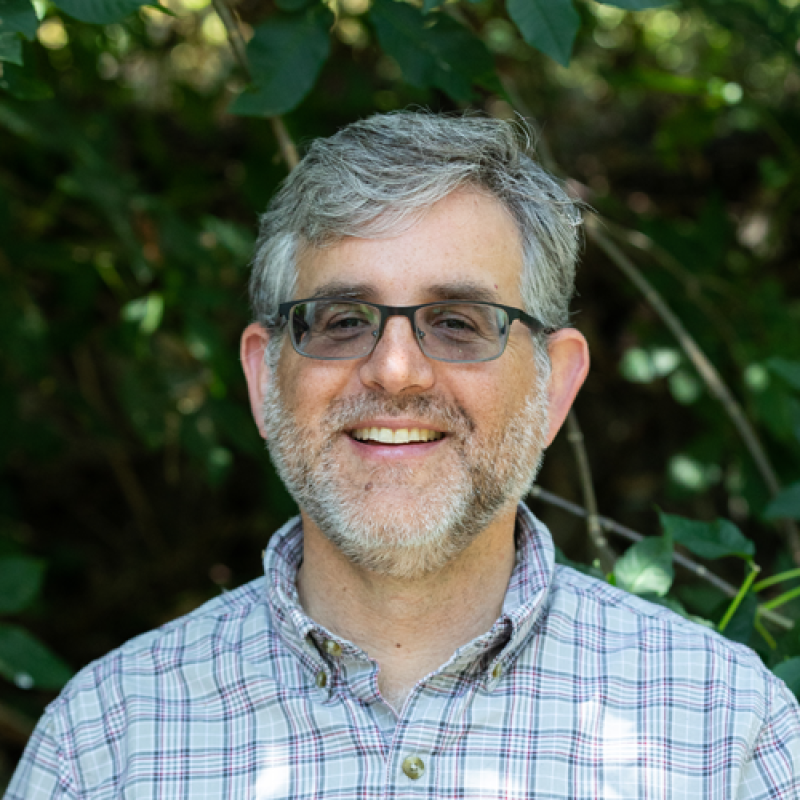Clark, M. L., Hakkenberg, C. R., Bailey, T., Burns, P., & Goetz, S. (2025). Changes in GEDI-based measures of forest structure after large California wildfires relative to pre-fire conditions. Remote Sensing of Environment. 323, 114718.
https://doi.org/10.1016/j.rse.2025.114718
Hakkenberg, C. R., Clark, M. L., Bailey, T., Burns, P., & Goetz, S. J. (2024). Ladder fuels rather than canopy volumes consistently predict wildfire severity even in extreme topographic-weather conditions. Communications Earth & Environment, 5(1), 721.
https://doi.org/10.1038/s43247-024-01893-8
Reilly, S., Clark, M. L., Loechler, L., Spillane, J., Kozanitas, M., Krause, P., Ackerly, D., Bentley, L. P., & Menor, I. O. (2024). Unoccupied aerial system (UAS) Structure-from-Motion canopy fuel parameters: Multisite area-based modelling across forests in California, USA.
Remote Sensing of Environment, 312, 114310.
https://doi.org/10.1016/j.rse.2024.114310
Quinn, C.A., Jantz, P., Salas, L., Goetz, S., Clark, M. (2024). Soundscape mapping: understanding regional spatial and temporal patterns of soundscapes in the context of remotely-sensed predictors and wildfire disturbance. Environmental Research: Ecology.
https://iopscience.iop.org/article/10.1088/2752-664X/ad4bec/meta
Krause, P., Forbes, B., Barajas-Ritchie, A. Clark, M., Disney, D., Wilkes, P., Patrick Bentley, L. (2023). Using terrestrial laser scanning to evaluate non-destructive aboveground biomass allometries in diverse Northern California forests.
Frontiers in Remote Sensing. 4.
https://doi.org/10.3389/frsen.2023.1132208
Quinn, C., Burns, P., Hakkenberg, C. R., Salas, L., Pasch, B., Goetz, S., & Clark, M. (2023). Soundscape components inform acoustic index patterns and refine estimates of bird species richness. Frontiers in Remote Sensing, 4, 35.
https://doi.org/10.3389/frsen.2023.1156837
Clark, M.L., Salas, L., Baligar, S., Quinn, C., Snyder, R.L., Leland, D., Schackwitz, W., Goetz, S.J., Newsam, S. (2023). The effect of soundscape composition on bird vocalization classification in a citizen science biodiversity monitoring project.
Ecological Informatics.
https://doi.org/10.1016/j.ecoinf.2023.102065
Quinn, Q.A., Burns, P., Gill, G., Baligar, S., Snyder, R.L., Salas, L., Goetz, S.J., Clark, M.L. (2022). Soundscape classification with convolutional neural networks reveals temporal and geographic patterns in ecoacoustic data.
Ecological Indicators,138.
https://doi.org/10.1016/j.ecolind.2022.108831.
Snyder, R., Clark, M., Salas, L., Schackwitz, W., Leland, D., Stephens, T., Erickson, T., Tuffli, T., Tuffli, M., Clas, K. (2022). Citizen Science: Theory and Practice. 7(1), p.24. DOI:
http://doi.org/10.5334/cstp.391
López-Carr, D., Ryan, S. J., Clark, M. (2022). Global economic and diet transitions drive Latin American and Caribbean forest change during the first decade of the century: a multi-scale analysis of socioeconomic, demographic, and environmental drivers of local forest cover change. Land, 11(3), 326.
https://doi.org/10.3390/land11030326
Forbes, B., Reilly, S., Clark, M., Ferrell, R., Kelly, A., Krause, P., Matley, C., O’Neil, M., Villasenor, M., Disney, M., Wilkes, P., Bentley, LP. (2022) Comparing remote sensing and field-based approaches to estimate ladder fuels and predict wildfire burn severity.
Frontiers in Forests and Global Change, 5.
https://doi.org/10.3389/ffgc.2022.818713
Clark, M.L., Ruiz,J., Fandino, M.C., López-Carr, D. (2021). Conservation priorities in terrestrial protected areas for Latin America and the Caribbean based on an ecoregional analysis of woody vegetation change, 2001–2010.
Land, 10(10):1067.
https://doi.org/10.3390/land10101067
Reilly, S., Clark, M., Bentley, L.B., Matley, C., Piazza, E., Oliveras, I. (2021). The potential of multispectral imagery and 3D point clouds from unoccupied aerial systems (UAS) for monitoring forest structure and the impacts of wildfire in Mediterranean-climate forests.
Remote Sensing, 13, 3810.
https://doi.org/10.3390/rs13193810
Okujeni, A., Jänicke, C., Cooper, S., Frantz, D., Hostert, P., Clark, M., Segl, K., van der Linden, S. (2021). Multi-season unmixing of vegetation class fractions across diverse Californian ecoregions using simulated spaceborne imaging spectroscopy data.
Remote Sensing of Environment, 264, 112558.
https://doi.org/10.1016/j.rse.2021.112558
Green, K., Tukman, M., Loudon, D., Schichtel, A., Gaffney, K.,
Clark, M. (2020). Sonoma County Complex Fires of 2017: Remote sensing data and modeling to support ecosystem and community resiliency. California Fish and Wildlife 2020 Special Fire Issue.
https://nrm.dfg.ca.gov/FileHandler.ashx?DocumentID=184827&inline
Cooper, S., Okujeni, A., Jänicke, C.,
Clark, M., van der Linden, S., Hostert, P. (2020). Disentangling fractional vegetation cover: regression-based unmixing of simulated spaceborne imaging spectroscopy data.
Remote Sensing of Environment. 246, 111856.
https://doi.org/10.1016/j.rse.2020.111856
Burns, P.,
Clark, M., Salas, L., Hancock, S., Jantz, P., Leland, D., Dubayah, R., Goetz, S. (2020). Incorporating canopy structure from simulated GEDI lidar into bird species distribution models.
Environmental Research Letters. 15, 095002.
https://doi.org/10.1088/1748-9326/ab80e
Ackerly, D.D., Kling, M.M.,
Clark, M.L., Papper, P., Oldfather, M.F., Flint, A.L., Flint, L.E. (2020). Topoclimates, refugia, and biotic responses to climate change.
Frontiers in Ecology and Environment.
https://doi.org/10.1002/fee.2204
Ackerly, D.D., Kozanitas, M., Papper, P. Oldfather, M., Clark. M. (2019). Mortality and resprouting in California oak woodlands following mixed-severity fire. Pp. 23-30. Proceedings of the International Oak Society, Davis CA
Clark, M. L. (2020). Comparison of multi-seasonal Landsat 8, Sentinel-2 and hyperspectral images for mapping forest alliances in Northern California. ISPRS Journal of Photogrammetry and Remote Sensing, 119, 228-245
Jänicke, C., Okujeni, A., Cooper, S., Clark, M., Hostert, P., & van der Linden, S. (2020). Brightness gradient-corrected hyperspectral image mosaics for fractional vegetation cover mapping in northern California. Remote Sensing Letters, 11(1), 1-10.
Clark, M. L., Buck-Diaz, J., Evens, J. (2018). Mapping of forest alliances with simulated multi-seasonal hyperspectral imagery and machine learning classifiers. Remote Sensing of Environment, 210, 490–507.
Blundo, C., Gasparri, N. I., Malizia, A., Clark, M., Gatti, G., Campanello, P. I., ... & MacDonagh, P. (2018). Relationships among phenology, climate and biomass across subtropical forests in Argentina. Journal of Tropical Ecology, 34(2), 93-107.
Clark, M. L. (2017). Comparison of simulated hyperspectral HyspIRI and multispectral Landsat 8 and Sentinel-2 imagery for multi-seasonal, regional land-cover mapping. Remote Sensing of Environment, 200, 311-325.
Guidici, D., & Clark, M. L. (2017). One-Dimensional Convolutional Neural Network Land-Cover Classification of Multi-Seasonal Hyperspectral Imagery in the San Francisco Bay Area, California. Remote Sensing, 9(6), 629.
Clark, M. L., & Kilham, N. E. (2016). Mapping of land cover in northern California with simulated hyperspectral satellite imagery. ISPRS Journal of Photogrammetry and Remote Sensing, 119, 228-245.


